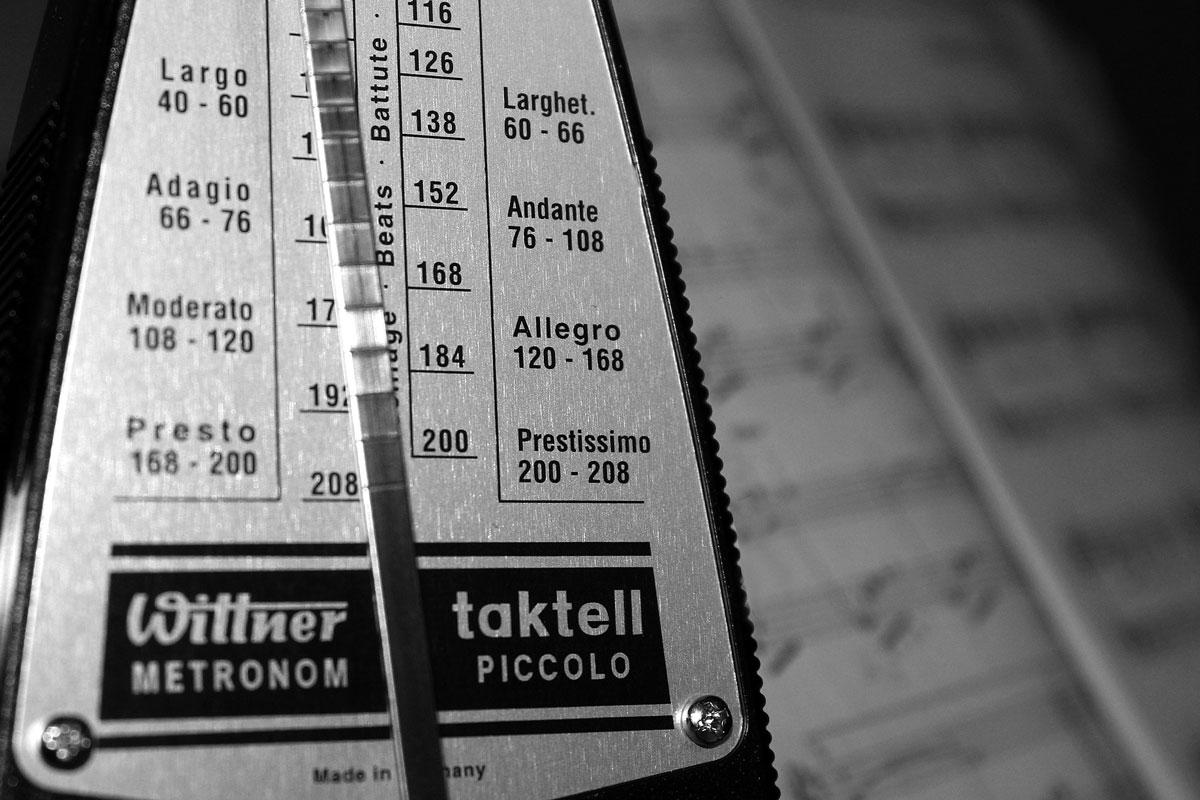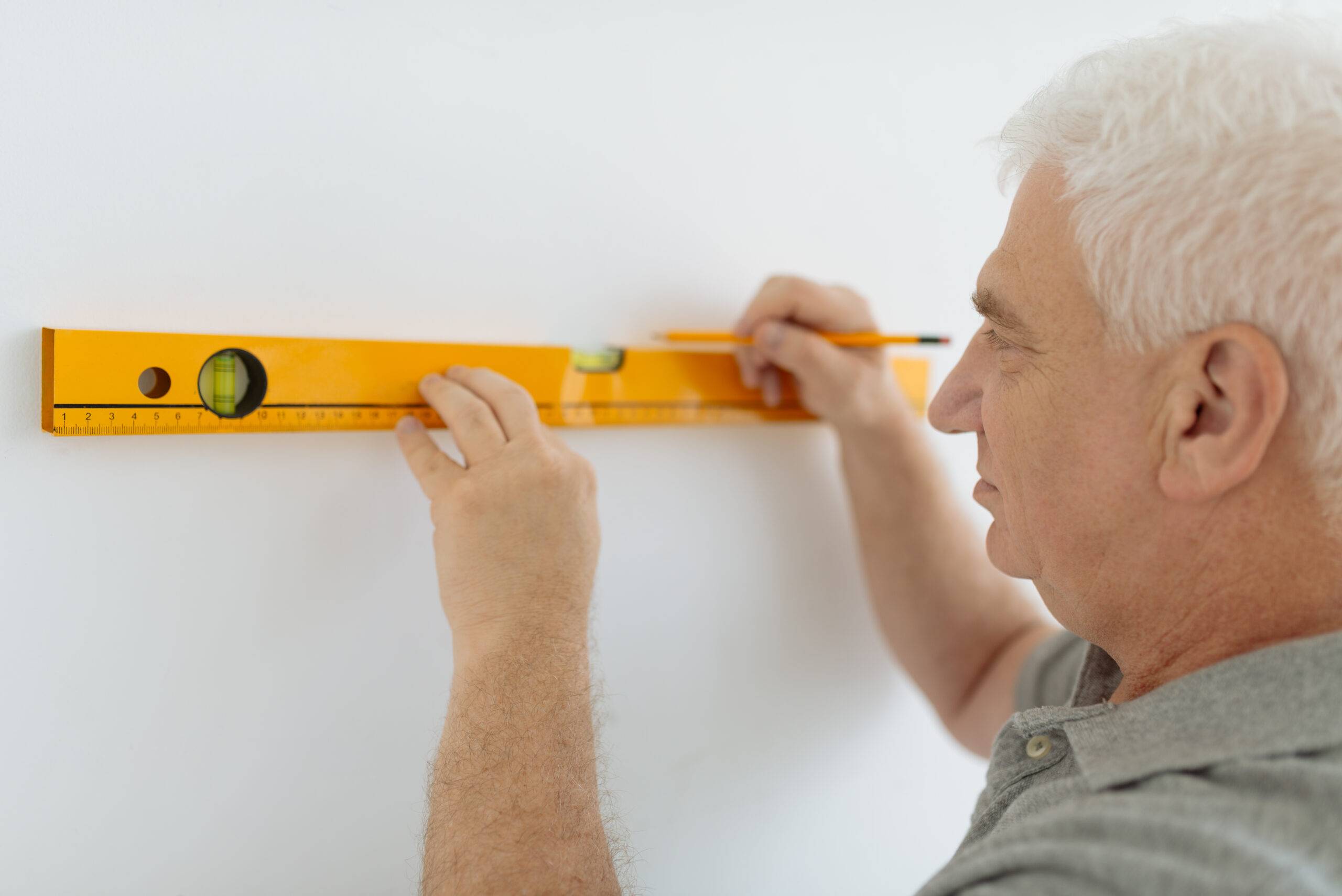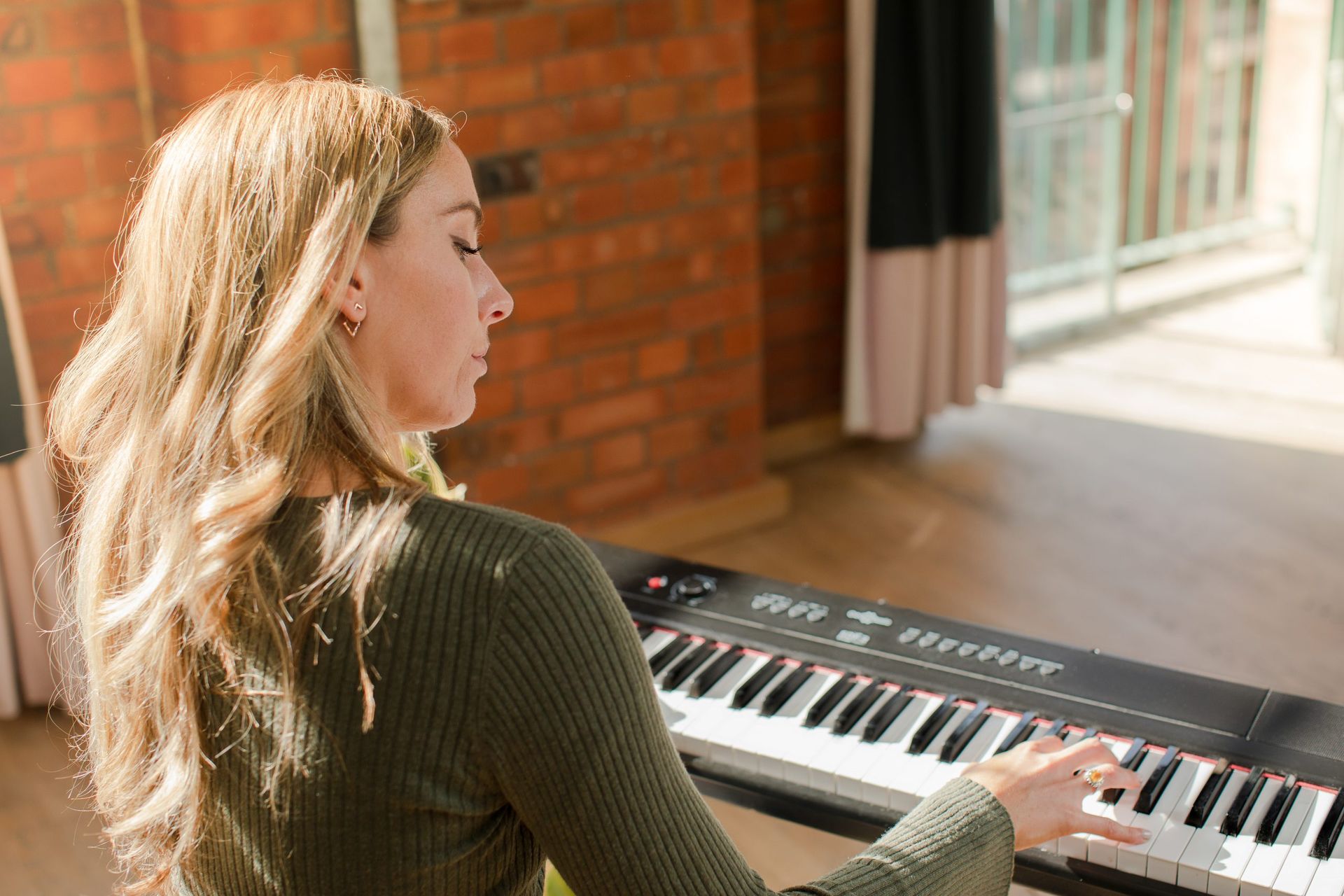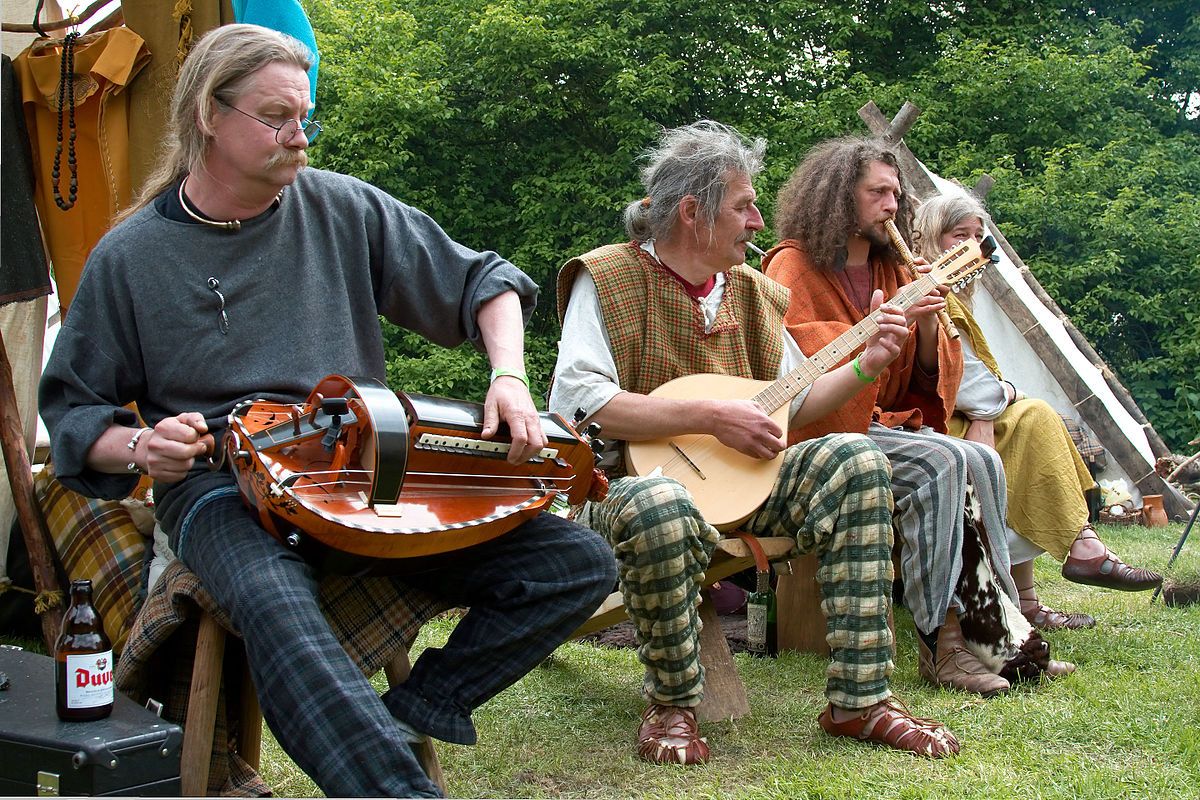Home>Production & Technology>Tempo>What Instrument Measures Music Tempo


Tempo
What Instrument Measures Music Tempo
Published: December 10, 2023
Learn about the instrument that accurately measures music tempo. Discover how tempo affects the rhythm and pace of your favorite songs.
(Many of the links in this article redirect to a specific reviewed product. Your purchase of these products through affiliate links helps to generate commission for AudioLover.com, at no extra cost. Learn more)
Table of Contents
Introduction
Music has always been an integral part of human culture. From ancient civilizations to the modern era, music has served as a form of expression, communication, and entertainment. One of the key components of music is tempo, which refers to the speed or pace at which a piece of music is performed. Tempo plays a crucial role in setting the mood, energy, and overall feel of a musical composition. It is the tempo that determines whether a song is fast and lively or slow and melancholic.
However, in order to accurately perform or analyze a piece of music, it is essential to measure its tempo. Measuring tempo allows musicians, composers, and producers to precisely control the rhythm, timing, and synchronization of different musical elements. It also helps in creating consistent performances, conducting orchestras, or adapting music for dance or film. Without accurate tempo measurements, musicians would be left to rely on their subjective interpretation of the music, which can result in inconsistencies and miscommunication.
In the past, measuring tempo was a challenging task. Musicians relied on their own sense of timing or used rudimentary methods such as tapping their foot or using a pendulum to estimate the tempo. However, with advancements in technology, modern methods of measuring tempo have made it easier and more accurate than ever before.
Definition of Tempo
Tempo is a fundamental element of music that refers to the speed at which a musical composition is performed. It is the rate at which the beats or pulses of a piece of music occur. Tempo can be thought of as the heartbeat or rhythm of a song, providing a sense of timing and structure.
Tempo is typically measured in beats per minute (BPM). The BPM value indicates the number of beats or pulses that occur in one minute. A higher BPM indicates a faster tempo, while a lower BPM indicates a slower tempo. For example, a song with a BPM of 120 would have 120 beats in one minute, while a song with a BPM of 60 would have 60 beats in one minute.
The tempo of a piece of music greatly influences its overall character and mood. A faster tempo can create a sense of excitement, energy, or urgency, while a slower tempo can evoke emotions of calmness, tranquility, or sadness. Tempo also helps in determining the genre or style of a musical composition. Different genres, such as classical, jazz, or dance music, often have specific tempo ranges associated with them.
There are various terms used to describe different tempos. Some common tempo markings include:
- Grave – very slow and solemn
- Largo – broad and slow
- Andante – walking pace
- Allegro – fast and lively
- Presto – very fast
These terms provide a general indication of the tempo, but precise tempo measurements are crucial for accurate performances and interpretations of music.
Importance of Measuring Tempo
Measuring tempo is essential for various reasons in the world of music. Whether you are a musician, composer, producer, or even a casual listener, understanding and accurately measuring tempo can greatly enhance your experience and interaction with music. Here are some reasons why measuring tempo is important:
1. Performance Consistency: Measuring tempo ensures that musicians can consistently perform a piece of music across different rehearsals, recordings, or live performances. It helps create a cohesive and synchronized sound, allowing multiple musicians to stay in rhythm and maintain a unified performance.
2. Practice and Skill Development: Tempo measurements are vital for effective practice sessions. Musicians can use metronomes or tempo detection software to set a specific BPM and practice playing at different tempos. This helps enhance their sense of timing, accuracy, and overall skill level.
3. Composition and Arrangement: Composers and arrangers rely on tempo measurements to accurately notate the rhythm, timing, and overall structure of their musical compositions. It allows them to communicate their musical ideas effectively to performers and ensures that the intended mood and energy of the music are accurately conveyed.
4. Music Production and Editing: Tempo measurements are crucial for music producers and editors. They help in aligning different tracks and audio elements, creating smooth transitions, and synchronizing music with visuals in media projects such as films, advertisements, or video games.
5. Dance and Choreography: Tempo measurements play a significant role in the world of dance. Choreographers and dancers use tempo to design and execute movements in sync with the music. Measuring tempo allows them to create routines that perfectly match the rhythm and dynamics of the music.
6. Song Covers and Adaptations: When musicians perform cover versions or adapt existing songs, measuring tempo helps them recreate the original feel and energy of the music. It ensures that their rendition stays faithful to the tempo of the original recording, providing a familiar listening experience for the audience.
Overall, measuring tempo is vital for musicians and music enthusiasts alike. It allows for more precise performances, accurate notations, synchronized music production, and a deeper understanding and appreciation of the rhythm and structure of music.
Traditional Methods of Measuring Tempo
Before the advent of modern technology, musicians had to rely on various traditional methods to measure tempo. These methods, though rudimentary compared to today’s advancements, were effective in providing a general sense of tempo. Here are some traditional methods of measuring tempo:
1. Conducting and Gesture: In an ensemble setting, conductors play a vital role in setting and maintaining the tempo. By using gestures, such as hand movements or baton swings, conductors communicate the desired speed and rhythm to the musicians. This visual cue allows for a more uniform and synchronized performance.
2. Metronomes: Metronomes have been used for centuries as a reliable tool for measuring and maintaining tempo. These mechanical devices or digital metronome apps produce a consistent beat at a specific BPM. Musicians can set the desired tempo and practice or perform alongside the metronome to maintain a steady rhythm.
3. Tapping or Counting: Musicians often tap their foot or use their fingers to count the beats in order to estimate the tempo. By feeling the pulse of the music and counting the beats, they can approximately determine the tempo and maintain a consistent rhythm.
4. Pendulum Swing: Another traditional method involves using a pendulum to measure tempo. Musicians would observe the swing of the pendulum and match their performance to the regular rhythm it provides. This method is less precise than a metronome but can provide a general sense of tempo.
5. Tempo Markings: Composers notate tempo in sheet music using specific terms, such as Allegro, Andante, or Presto. These markings provide a rough indication of the desired tempo range. Musicians would interpret these markings and adjust their performance accordingly.
While these traditional methods were effective to some extent, they had limitations in terms of accuracy and consistency. Fortunately, with advancements in technology, musicians now have access to more precise and reliable methods of measuring tempo.
Modern Methods of Measuring Tempo
Advancements in technology have revolutionized the way we measure and interpret tempo in music. Modern methods provide musicians with more accurate, consistent, and versatile ways to measure tempo. Here are some of the modern methods used to measure tempo:
1. Metronomes: Digital metronomes have replaced their mechanical counterparts, offering greater functionality and convenience. Metronome apps and software allow musicians to set precise BPM values and even customize different rhythmic patterns and accents. They also provide visual and audible cues to help musicians stay on beat during practice or performance.
2. Tempo Tap Apps: Tempo tap apps are smartphone applications that allow musicians to determine the tempo of a song by tapping along with the rhythm. Using the device’s built-in microphone or accelerometer, these apps analyze the taps and calculate the corresponding BPM. This method is useful for determining the tempo of existing songs or when no other tools are available.
3. Tempo Detection Software: There are specialized software programs designed to detect and analyze the tempo of audio recordings. These programs use advanced algorithms to accurately measure the tempo based on the rhythmic patterns and intervals within the music. Tempo detection software is commonly used in music production, remixing, and DJing, where precise tempo matching is essential for seamless transitions.
4. Digital Audio Workstations (DAWs): DAWs, such as Ableton Live, Logic Pro, and Pro Tools, have built-in tempo detection capabilities. Musicians can import audio recordings into the software, and the DAW will analyze the music and automatically calculate the tempo. This feature is valuable for remixing, synchronization with visuals, and aligning various tracks within a project.
5. Online Tempo Databases: Several online databases provide access to a vast collection of songs with their corresponding BPM values. Musicians can search for a particular song and find its tempo, making it easier to learn, cover, or remix the song accurately.
These modern methods of measuring tempo offer musicians, producers, and performers greater precision and flexibility in controlling and interpreting the rhythm of music. They save time and effort, allowing for more creative exploration and seamless collaboration within the world of music.
Metronomes
Metronomes are essential tools for measuring and maintaining tempo in music. They provide a consistent beat and help musicians stay in rhythm during practice, rehearsals, and performances. Metronomes have evolved from mechanical devices with swinging pendulums to digital metronomes and mobile applications with advanced features. Here’s how metronomes play a significant role in measuring tempo:
1. Precise Tempo Control: Metronomes allow musicians to set a specific BPM value, providing precise control over the tempo of a musical piece. This ensures consistency and accuracy in performances across different settings and helps musicians develop a strong sense of timing.
2. Versatility: Digital metronomes and metronome apps offer a wide range of features and customization options. Musicians can choose different time signatures, accents, and subdivisions to match the specific requirements of their music. This versatility enables musicians to practice and perform complex rhythms and syncopated patterns with ease.
3. Practice Aid: Metronomes are valuable tools for musicians during practice sessions. By playing alongside a metronome, musicians can gauge their timing and rhythmic accuracy. It helps them identify and rectify any inconsistencies or weaknesses in their playing, leading to improved overall performance.
4. Tempo Graduation: Some metronomes feature tempo graduation, where the BPM increases or decreases gradually over time. This feature helps musicians build stamina, increase their speed, and develop a better understanding of tempo transitions within a piece of music.
5. Subdivisions and Accents: Metronomes provide the option to emphasize specific beats within a measure by using accents. This feature helps musicians refine their timing and develop a strong sense of pulse and groove. Metronomes also allow for practice with different subdivisions, such as eighth notes, triplets, and sixteenth notes, enabling musicians to master complex rhythmic patterns.
6. Performance Aid: Metronomes are often used during live performances or studio recordings to keep musicians in sync. They serve as a reliable reference point for maintaining a consistent tempo, ensuring tight ensemble playing and synchronization with other musicians or backing tracks.
Overall, metronomes are indispensable tools for measuring and maintaining tempo in music. They provide musicians with a solid foundation for rhythm and timing, aiding in precision, practice, and performance. Whether using a traditional metronome or a digital app, musicians of all levels can benefit from incorporating metronomes into their musical journey.
Tempo Tap Apps
Tempo tap apps have become popular tools for measuring and determining the tempo of music. These smartphone applications allow musicians and music enthusiasts to tap along with a song and calculate its BPM (beats per minute). Tempo tap apps offer convenience and accuracy in measuring tempo, making them a valuable resource for musicians. Here’s how these apps work and why they are beneficial:
1. Simple and Intuitive: Tempo tap apps are designed to be user-friendly and easy to use. The concept is straightforward: users tap their device’s screen or press a button in time with the music they want to measure. The app registers the taps and calculates the average tempo, providing an accurate BPM reading.
2. Quick Tempo Detection: Tempo tap apps provide instant results, allowing users to determine the tempo of a song on the spot. Whether you’re practicing, at a live concert, or simply listening to music, tempo tap apps provide a convenient way to measure the speed of a song without the need for additional equipment.
3. Adaptation and Learning: Tempo tap apps are especially beneficial for musicians who want to learn and play along with songs. By knowing the tempo, musicians can adapt their performance to match the original recording or use the information to create their own arrangements.
4. Tempo Transitions and Variations: Some songs have tempo changes or complex rhythms that can be challenging to notate or analyze. Tempo tap apps help musicians identify these transitions and variations in tempo by allowing them to tap along with the changes and accurately measure the BPM for different sections of a song.
5. Songwriting and Composition: Tempo tap apps can aid in the process of songwriting and composition. Musicians can experiment with different tempos and gauge the feel and energy of their compositions. By tapping along to a rhythm or melody, they can determine the ideal tempo that best suits their musical ideas.
6. Collaborative Music Making: Tempo tap apps can facilitate collaborations among musicians. By sharing tempo information with bandmates or fellow musicians, everyone can be on the same page and ensure a cohesive performance or recording.
Overall, tempo tap apps are valuable tools for musicians, providing a quick and accurate method of measuring the tempo of songs. With their convenience and versatility, these apps have become essential companions for musicians and music enthusiasts who seek to understand and interact with music on a deeper level.
Tempo Detection Software
Tempo detection software is a powerful tool used in music production, remixing, and analysis. This specialized software is designed to automatically detect and analyze the tempo of audio recordings, providing musicians, producers, and DJs with precise BPM (beats per minute) measurements. Tempo detection software offers a range of features and benefits, making it an essential component in modern music production. Here’s how tempo detection software works and why it is valuable:
1. Automated Tempo Analysis: Tempo detection software uses advanced algorithms to analyze the rhythmic patterns and intervals within an audio recording. It identifies the beats and calculates the tempo with high accuracy. This automation saves time and effort compared to manual tempo mapping or tapping methods.
2. Tempo Synchronization: Tempo detection software allows musicians and DJs to synchronize different tracks to a common tempo. This is especially useful in remixing, mashups, and creating seamless transitions in DJ sets. By matching the tempos of multiple tracks, musicians can create smooth and cohesive musical experiences.
3. Remixing and Beatmatching: When remixing a song or creating a new musical composition, tempo detection software helps in aligning different elements, such as vocals or instrumental parts, to the established tempo. This ensures that all elements of the remix or composition remain in time and sound harmonious.
4. Sample Selection and Timing: In sound design and electronic music production, tempo detection software assists in selecting and manipulating samples. By knowing the tempo of a song or project, producers can choose samples that fit the desired tempo and rhythm, resulting in a more cohesive and polished production.
5. Remix Analysis and Learning: Tempo detection software is valuable for analyzing existing remixes or productions. By measuring the tempo of a professionally produced remix or track, musicians can study the rhythm and timing choices made by experienced producers, helping them improve their own productions and remixing techniques.
6. Production Workflow and Editing: Tempo detection software aids in the editing process by ensuring that timing and synchronization remain consistent throughout a project. It enables precise alignment of audio clips and helps maintain the integrity of the musical arrangement.
With its ability to accurately measure and analyze tempo, tempo detection software provides musicians, producers, and DJs with a powerful toolset for creating, remixing, and refining their musical projects. It streamlines the production workflow, enhances collaboration, and ultimately contributes to the overall quality and cohesiveness of the final product.
Conclusion
The measurement of tempo is a crucial aspect of music that allows for precise control, synchronization, and interpretation of musical compositions. Traditional methods, such as conducting, tapping, and using metronomes, have been relied upon for centuries to estimate tempo. However, with advancements in technology, modern methods have revolutionized the way we measure tempo.
Tempo tap apps and tempo detection software provide musicians with accurate and convenient ways to measure the tempo of songs in real-time. These tools allow for instant tempo analysis, tempo synchronization, and precise tempo control. They are invaluable for musicians, producers, and DJs in various applications, including performance, recording, composition, remixing, and production.
Metronomes continue to be an essential tool for musicians, offering precise tempo control and aiding in practice, performance, and ensemble playing. They provide a consistent beat and help musicians maintain a steady rhythm.
Overall, measuring tempo is vital for musicians as it contributes to performance consistency, skill development, composition accuracy, music production, and dance synchronization. Whether through traditional methods or modern tools, understanding and accurately measuring tempo enhances the musical experience, ensuring that rhythm, timing, and synchronization are effectively communicated.
As technology continues to evolve, we can expect further advancements in tempo measurement. New tools and features will emerge, providing even more accurate and versatile ways to measure and interact with tempo in music. Regardless of the methods employed, the importance of measuring tempo cannot be overstated, as it is the foundation for creating and experiencing music in its truest form.











